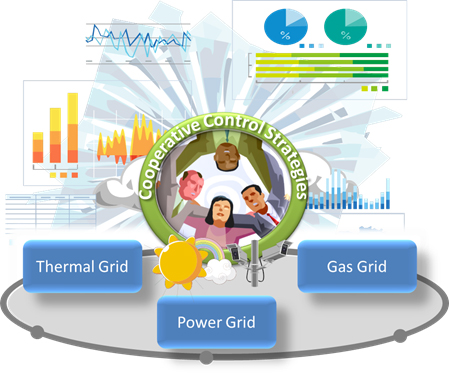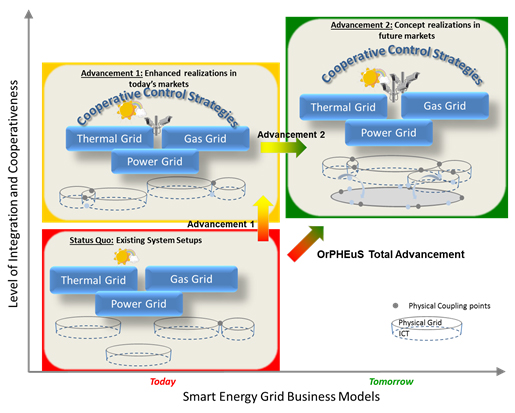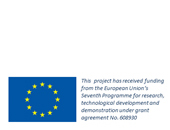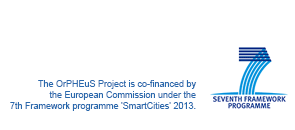Concept
The OrPHEuS project elaborates a Hybrid Energy Network Control System for Smart Cities implementing novel cooperative local grid and inter-grid control strategies for the optimal interactions between multiple energy grids by enabling simultaneous optimization for individual response requirements, energy efficiencies and energy savings as well as coupled operational, economic and social impacts. Starting from existing system setups in two cities (city of Skellefteå, in Sweden and the city of Ulm in Germany) enhanced operational scenarios are demonstrated for today’s market setup, as well as for future market visions.
The control strategies based on a Cooperative Coexistence design aim for:
- Reduction of operational costs
- Ensure robust business models and market design with high renewable resources penetration
- Customer satisfaction across the hybrid energy networks.
Cooperative Control Strategies are designed to achieve improved energy utilization levels and power balancing control throughout all energy network operations.
The aim of the “cooperative” nature of the control design targets involves (Fig.1):
a) on one hand a technical optimization within and across the involved grids linked on the coupling points;
b) and on the other hand to provide a win-win market situation to exploit technical benefits with the economical and societal benefits for all involved stakeholders.

Fig. 1 OrPHEuS Project Business and Technological Concept view
Fig. 2 visualizes the OrPHEuS Cooperative Coexistence scientific concept. The project creates the advancements over today’s existing situation by an evolution of the quality of the interactions of the energy systems. Advancement 1 represents the increasing quality of the cooperativeness followed up by Advancement 2, which expands the business models for a further quality level in cooperative integration.

Fig. 2 OrPHEuS Project Results mapped on parameters for Cooperative Control Strategies and business extensions
In detail, the novel aspect of the OrPHEuS project beyond the state of the art is founded on the following two advancements, providing a strong contribution in optimizing hybrid energy grids in smart cities:
Status Quo: Existing system setups: For the quantitative evaluation of new business models and cooperative control strategies developed in the OrPHEuS project in terms of technological, economic and social benefits it is important to have a reference scenario available. Hence, at first, the status quo is simulated by initializing the business models of the different market participants with the existing system setups. This means that the currently existing technology portfolio, market interactions, regulatory framework and the currently existing tariffs in the demonstration sites are incorporated in the different models.
Advancement 1: Enhanced realization of today’s markets: from the existing physical coupling points of multi domain distribution energy grids and within today’s business models (i.e. today’s economic interactions of all market participants involved) to the exploitation of enhanced physical coupling options and enhanced control strategies.
Advancement 2: Concept realizations in future markets: While the current business world implies certain restrictions to the interplay of various stakeholders, the OrPHEuS project reaches beyond the boundaries of existing business models by exploring opportunities for Cooperative Coexistence and System integration.


